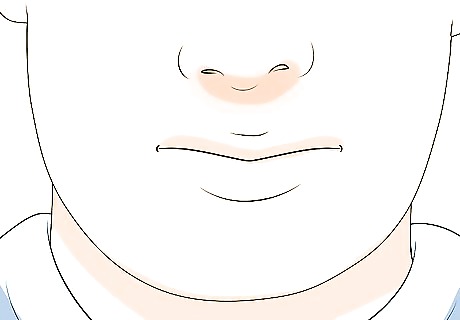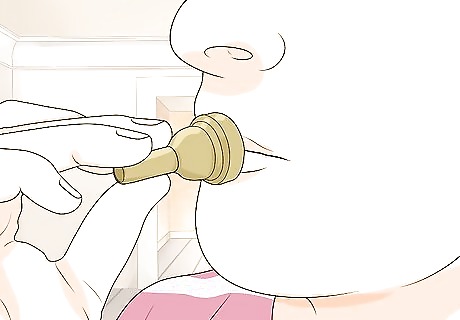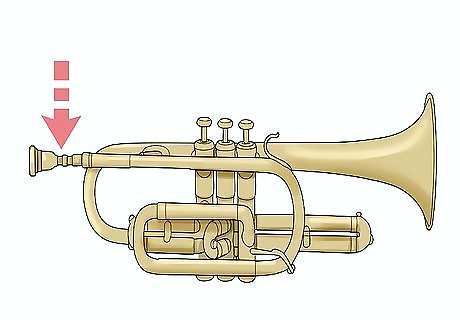
views
Making the Correct Mouth Shape with Your Lips and Teeth

Make a closed shape with your lips. Keep your mouth relaxed and your airway open for good airflow while bringing your lips together in the middle. Press your lips together as if making an 'm' sound, like the beginning of the word 'mother.' Your lips should be together, but only slightly. Keep the corners of your lips tight to prevent air from escaping.

Be sure to not clench your teeth. Having your jaws tight will constrict airflow, cut off your notes prematurely, and make holding your lip shape more difficult. With your jaws partly open, the rest of your mouth should be wide and hollow.

Constrict your diaphragm muscles to exhale forcefully. Breathing from deep down in your chest and stomach gives force to the notes for both volume and clarity. Push air through your lips with them pressed lightly together until they buzz. Good lung capacity for sustained notes is essential for playing the trumpet. If there is too little air escaping, relax your mouth and try making the 'm' shape again.
Practicing with a Mouthpiece Not Attached to a Trumpet

Keep your lips securely together. Maintaining this form is the basis for proper trumpet playing. The position of your mouth and lips to the mouthpiece is called embouchure. Over time, you will be able to develop your own embouchure, tailored to your individual playing style and genre of music. Bring the mouthpiece to your lips and place it in the center of your lips, not to either side. This will assure the best sound. Everyone's mouth is different, so as long as you can make the correct buzzing with your lips and sustain your notes, find what position works best for you. Wet lips will help change dynamics faster, but they will make the mouthpiece more slippery. Dry lips will stick to the mouthpiece and make holding the correct 'm' shape with your lips easier.

Relax your shoulders and breathe from your stomach. Having your entire body relaxed will allow you to slow your breathing and produce longer, clearer, and continuous notes. Tension will distort the notes. Breathing from your stomach will enhance your lung capacity and help make longer notes easier. Take a full breath each time you blow into the mouthpiece. Keep your shoulders steady when you inhale so your breathing will be stronger.

Blow into the mouthpiece. Your lips should buzz into the mouthpiece with good airflow. Your embouchure will develop over time with practice, allowing you to play at high and low pitches with minimal effort. Avoid puffing out your cheeks or extending your lips too much. The looser your lips, the lower the sound produced. If buzzing correctly, the mouthpiece should produce a honking sound. Keep the airflow constant to produce a steady note.

Separate your notes with the tip of your tongue. The way a note is played is called articulation. The notes can be held out, slurred together, or rapidly cut off for staccato tempos. You can separate your notes by touching the tip of your tongue against the roof of your mouth. Tapping your tongue against your teeth will create a brief pause between your notes. Keep your mouth relaxed and your teeth apart to allow steady airflow between tapping of your notes.

Attach the mouthpiece to the trumpet. Once the mouthpiece is secured, blow into the instrument using the same skills of the 'm' lip shape, embouchure, relaxation, and breathing. By controlling your airflow and articulating long and short notes with your tongue, you will be able to move forward with learning the trumpet.


















Comments
0 comment